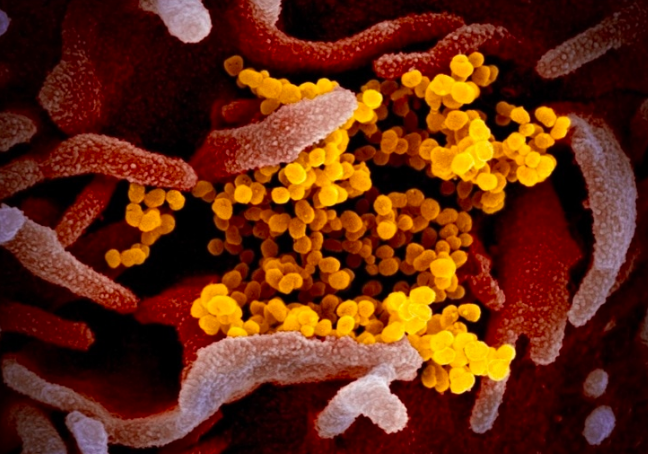
The severe acute respiratory syndrome coronavirus 2 (SARS-CoV-2) – the causative pathogen of coronavirus disease 2019 (COVID-19) – spreads via respiratory droplets, aerosols or airborne particles. When the virus enters the body, it binds with the angiotensin-converting enzyme 2 (ACE2) receptors of healthy cells to gain entry and promote viral replication.
A new study has found that there are about ten virus particles in each cell in the body. The research team from the Weizmann Institute of Science in Israel and the University of California in the USA estimate that each infected person carries around 109-1011 virions during peak infection.
Estimating cell number and mass
Estimating essential biological quantities such as the total number and mass of cells in the body helps the current effort to study and control the COVID-19 spread.
Knowing how many infected cells and how fast virus particles spread in the human body is vital for understanding the current global pandemic. Further, the information about SARS-CoV-2 may help in finding ways to combat it.
To arrive at the study findings, which appeared on the preprint server medRxiv*, estimated the abundance of potential SARS-CoV-2 host cells and typical concentrations of virions in body fluids.
"Knowledge of the absolute number of virions in an infected individual can put into perspective parameters of the immune system response, minimal infectious doses, and limits of detection in testing," the research team explained.
The study findings
To estimate the total number of virus particles in an infected person at the peak of the infection, the team based measured the concentration of virions in rhesus macaques' tissues after being infected with SARS-CoV-2.
One study focused on samples of relevant tissues in the respiratory and digestive tracts and in immune responses.
To obtain the estimate for the total number of virus particles, the team multiplied each tissue's viral concentration by the total tissue mass.
The lungs have the most extensive tissue in terms of mass and the highest viral concentration.
Another study measured the viral concentrations in tissues obtained from infected rhesus macaques a few days after inoculation. The researchers used values in units of TCID50, which provides the measurement of the concentration of infectious viruses.
The findings show much smaller maximal values of 103 to 104 TCID50 per ml for lung tissue. Combining this with the volume in an adult human lung, the researchers estimated 105 to 107 TCID50 virions in an adult.
Hence, the team concluded that the total number of virions in an infected person during peak infection is 109 to 1011 RNA copies or 105 to 107 TCID50.
About 1 to 10 percent of lung and airway cells contain the needed ACE2 receptor to be infected with SARS-CoV-2. The number is higher than the estimate for the total number of infected cells. This suggests that out of the cells that express both ACE2 and TMPRSS2 (Transmembrane protease, serine 2), only a small fraction get infected by the virus.
The researchers believe that having better quantitative data on the infection process at the cellular level, the intra-host level, and the inter-host level will help equip scientists with better tools to battle the spreading of the COVID-19 pandemic.
The virus has spread to 191 countries, infecting over 55.76 million people and killing at least 1.34 million people.
The United States reports the highest SARS-CoV-2 infection toll, surpassing 11.36 million cases. India, Brazil, and France follow with surging cases reaching 8.91 million, 5.91 million, and 2.08 million cases, respectively.
*Important Notice
medRxiv publishes preliminary scientific reports that are not peer-reviewed and, therefore, should not be regarded as conclusive, guide clinical practice/health-related behavior, or treated as established information.
